Recording Techniques
1/17
Earn XP
Description and Tags
Music Tech || MT CA5 - Multitrack Recording
Name | Mastery | Learn | Test | Matching | Spaced |
|---|
No study sessions yet.
18 Terms
What things should you consider when planning a recording session?
Time constraints and timeline for completion
The length of each session
What you want to achieve in the session (agreed goals)
What the hardware requirements are for the session (equipment required)
What the software requirements are for the session
What the musical artist’s requirements are
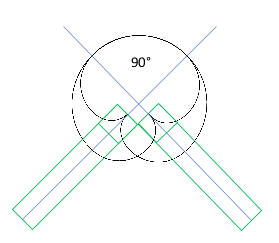
Explain what an XY stereo recording is.
This technique consists of two cardioid microphones.
They are set at a right angle, with one microphone capturing the left and the other the right side.
The cardioid polar patterns combine to create a stereo image.
Why is XY stereo recording best done with condenser microphones?
Because they have a flatter frequency response.
This means that the recording will sound true to real life as there will be less cutting and boosting of specific frequencies.
They also have a wider frequency range, meaning that they can capture the full range of human hearing.
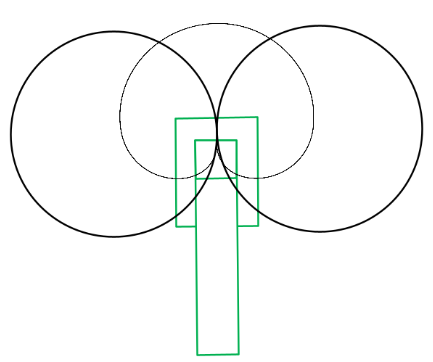
Explain what an mid side stereo recording is.
This technique consists of one cardioid microphone and one figure of 8 microphone.
The figure of 8 captures the sides, whilst the cardioid microphone captures the mid.
To create a stereo image, processing is required in your DAW.
What is the benefit of the mid side stereo recording technique?
Mid/side technique creates a very wide stereo image.
Whilst capturing detail using the mid cardioid microphone.

Explain what the DI method is.
It stands for direct input, it requires phantom power to work, and converts unbalanced signals to balanced signals.
This is a method of recording that does not use microphones to capture audio.
It is commonly used to capture electric bass, guitars, and keyboards.

Explain the function of the link output on the front of the DI box.
The link output of a DI box means that you can send a copy of the direct guitar signal to an amplifier.
This can then be recorded using a microphone.
When recording using line or instrument level inputs you are recording using the technique known as what?
direct input (DI)
What is the difference between line level inputs and instrument level inputs?
Line level inputs are used for equipment such as hardware synthesizers and drum machines.
Instrument level inputs are used for instruments like electric or bass guitar.
There will usually be a physical button to switch between these two input types.

What’s the difference between a mono ¼" jack cable (left) and a stereo ¼" jack cable (right)?
The stereo ¼" jack cable has a sleeve underneath the ring.
The first jack cable is capable of carrying unbalanced mono signals.
The second jack cable is capable of carrying an unbalanced stereo signal or a balanced mono signal.
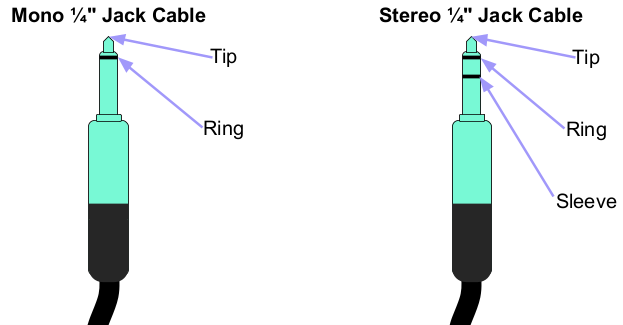
What is a mini jack cable?
They are 1/8" Jack for use with mobile phones and laptops.
They work in exactly the same way, but they are smaller.
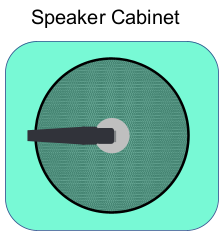
Explain the speaker microphone placement.
Dynamic microphones that have a frequency response suitable for a bass guitar would suit this method.
Placement:
Centre of the cone: a brighter tone.
Edge of the speaker: a darker tone.
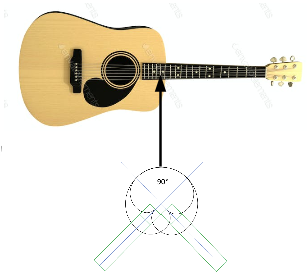
Explain the XY microphone placement to record a guitar.
A good starting position is:
Where the neck meets the body
About 30cms away from the guitar
If you want more ambience, move the microphones further back.
What is multi-tracking?
Using two or more microphones to record a sound source simultaneously.
What is overdubbing?
Recording something over the top of a previously recorded track
What is close mic?
Placing a microphone as close as possible to a sound source.
What is the stereo microphone technique?
Using two microphones together to record a stereo image by combining their polar patterns.
What is the proximity effect?
When the sound a microphone captures becomes more intense as the sound source moves closer to it.
The sensitivity to the low end will increase.
This effect only occurs on cardioid and figure of 8 patterns.